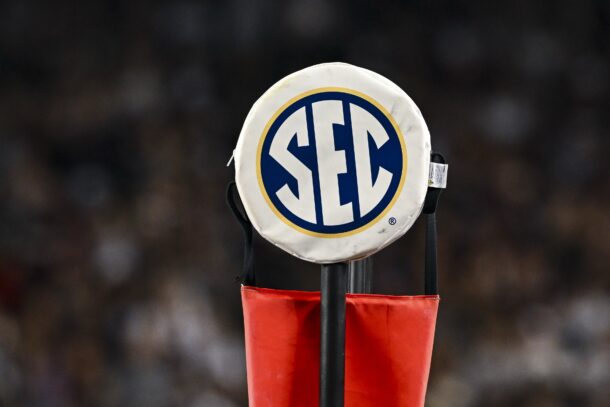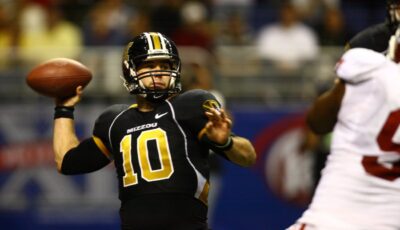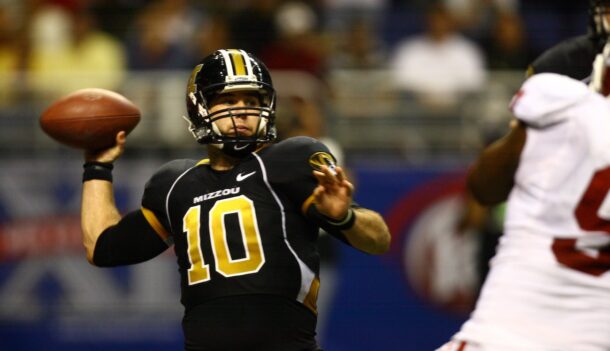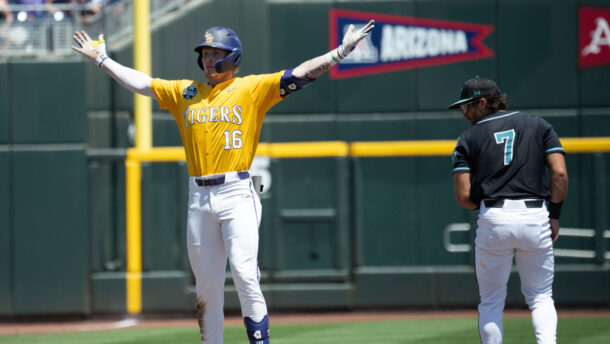Kentucky will put its 6-game winning streak on the line on Saturday afternoon against Texas A&M in College Station.
The Wildcats have played very well recently and are 2-0 to start SEC play. On the other side, the Aggies are 0-2 in league play and have been trending in the wrong direction for the past few weeks.
Both teams have major advantages over the opponent which could prove to be decisive. Let’s dig into this matchup:
Kentucky vs. Texas A&M Betting Odds
Spread: Texas A&M -3.5 (DraftKings)
Total: Over/Under 155 points (DraftKings)
New Customers: Bet $5, Get $300 if Your Bet Wins!
DraftKings States: AZ, CO, CT, DC, IL, IN, IA, KS, KY, LA, ME, MD, MA, MI, NH, NJ, NY, NC, OH, OR, PA, TN, VT, VA, WV, WY![]()
Betting trends to know for Kentucky
- Kentucky is 10-4 against the spread
- The over is 11-3 in Kentucky games
- Kentucky is 2-0 against the spread as the road team
- Kentucky is 3-0 against the spread as the underdog
- Kentucky is 4-2 against the spread on equal rest
Kentucky has been one of the more profitable teams in the country this season. The Wildcats are consistently beating the market, especially lately. They’ve won 8 of their last 9 against the spread, including 6 in a row. The lone exception during that period was their loss to UNC-Wilmington back on Dec. 2. Kentucky is a better 3-point shooting team than they’ve been in recent years — more on that later — which may be one reason why the Wildcats are still be undervalued on a consistent basis.
Betting trends to know for Texas A&M
- Texas A&M is 7-8 against the spread
- The over is 8-7 in Texas A&M games
- Texas A&M is 2-5 against the spread at home
- Texas A&M is 4-6 against the spread as a favorite
- Texas A&M is 2-5 against the spread as a home favorite
The Aggies have struggled against the number over the past couple of weeks. The Aggies have failed to cover in 5 of their last 6 games, including 4 in a row. That stretch includes a 15-point loss to LSU as a double-digit favorite. After a hot start to the season, Texas A&M has been consistently underwhelming since late November.
3 notes for the game
Kentucky’s 3-point shooting is legit
It’s hard to overstate how different this Kentucky team is compared to what the Wildcats have been trotting out in year’s past. First and foremost, this team can really shoot the ball. Kentucky has made 39.9% of its 3-point shots this year, which ranks in the top 10 nationally entering Saturday’s slate of games. For context of how unusual that is for Kentucky, the Wildcats haven’t finished in the top-100 — let alone the top-10 — in 3-point shooting since 2015-16, according to KenPom. That Kentucky team was led by Jamal Murray, who made over 40% of his 3-pointers that season.
So what’s keying this shooting renaissance for Kentucky? First, there’s more space thanks to power forward Tre Mitchell’s shooting ability. Mitchell is shooting a respectable 36% from long range on a health volume of 3.6 attempts per game. Second, Kentucky just has some really high-level shot-makers on this team. Reed Sheppard and Rob Dillingham both come off the bench for the Wildcats, but the freshman guard duo has been incredible efficient from beyond the arc. Sheppard and Dillingham are making 53.6% and 44.4% of their 3-point tries, respectively. Veteran Antonio Reeves is also shooting a career-best 41.9% from 3-point range this year.
Kentucky’s combination of elite shooting and competent guard play has made this one of the most efficient offenses in the country. The Wildcats rarely turn the ball over and have an effective field goal percentage of 57.4% this year, which ranks No. 11 nationally per KenPom.
Texas A&M’s 3-point shooting is … not
Texas A&M is at the opposite end of the spectrum when it comes to 3-point shooting. The Aggies have made just 26% of their tries from downtown this season, which is abysmal. It ranks No. 354 out of 362 division I teams, per KenPom. By 3-point percentage, Texas A&M is the worst shooting team amongst power-5 programs by a considerable margin. In 2024, it’s incredibly difficult to win games without at least some threat of shooting from long range. Of the 8 teams with a worse 3-point percentage than Texas A&M this season, they have a combined record of 25-100.
There is some reason for optimism that Texas A&M could have some positive regression in this area. The Aggies’ most-frequent shooter is Wade Taylor, who takes 7.6 3-point attempts per game. He’s only made 25.4% of his long-range tries this season, which, again, is abysmal. However, he made 35.6% of his 3-point attempts last season and is a career 84% free throw shooter — a good sign that he has the requisite touch and shooting ability to be efficient from deep in the long run.
However, the optimism pretty much begins and ends with Taylor. Texas A&M has 3 other players who attempt more 3 long-range shots per game: Hayden Hefner, Jace Carter and Tyrese Radford. None of those players have anything in their profiles to suggest they’re close to a breakout. Hefner, who is 2nd on the team with 4.9 attempts per game, is actually shooting better than his career average. Radford had 1 great shooting season in 2021-22, but has otherwise been mediocre (or worse) from beyond the arc in his 5-year college career.
Texas A&M’s offensive rebounding prowess
Texas A&M does have one major advantage in this game: offensive rebounding. The Aggies are the best offensive rebounding team in the country, per KenPom, as they corral a staggering 44.6% of their missed shots. For context of how absurd that is, no other division I team has an offensive rebounding rate above 41.7%. It’s been the great equalizer for Texas A&M this season — and why the Aggies are still in the top 30 of KenPom’s offensive efficiency metric despite being one of the worst 3-point shooting teams in the country.
Even more impressively, Texas A&M accomplishes this offensive rebounding rate without having a single rotation player who is taller than 6-foot-8. The Aggies have an armada of rebounders who seemingly have very few other responsibilities on offense. The quartet of Andersson Garcia, Henry Coleman, Solomon Washington and Wildens Leveque all have offensive rebounding rates north of 11%. Of that group, only Coleman has a usage rate of more than 13.1%.
Will this translate against Kentucky and other high-major teams? So far in SEC play, it’s been a mixed bag. Texas A&M collected just 28.9% of its missed shots against LSU. However, against Auburn, the Aggies recovered 42.2% of its offensive rebounding opportunities. (Of course, A&M lost both of those games by double digits because it shot a combined 8-of-47 from 3-point range). Kentucky has been good (but not great) on the defensive glass this season, ranking No. 83 nationally per KenPom. The Wildcats’ front court is led by Mitchell and Aaron Bradshaw, who will both have considerable size advantages over their A&M front court counterparts in this matchup.
1 pick for this game
Kentucky +3.5. I think this is a bad matchup for Texas A&M. Barring a hot shooting night from Taylor, they’re going to get gashed on the perimeter. If this is the game Taylor finally catches fire from 3-point land (after starting SEC play 3-of-20), I’m willing to live with the result. Texas A&M’s one significant matchup advantage — offensive rebounding — should be mitigated by Kentucky’s size and overall commitment to rebounding.
New Customers: Bet $5, Get $300 if Your Bet Wins!
DraftKings States: AZ, CO, CT, DC, IL, IN, IA, KS, KY, LA, ME, MD, MA, MI, NH, NJ, NY, NC, OH, OR, PA, TN, VT, VA, WV, WY![]()
Spenser is a news editor for Saturday Down South and covers college football across all Saturday Football brands.







